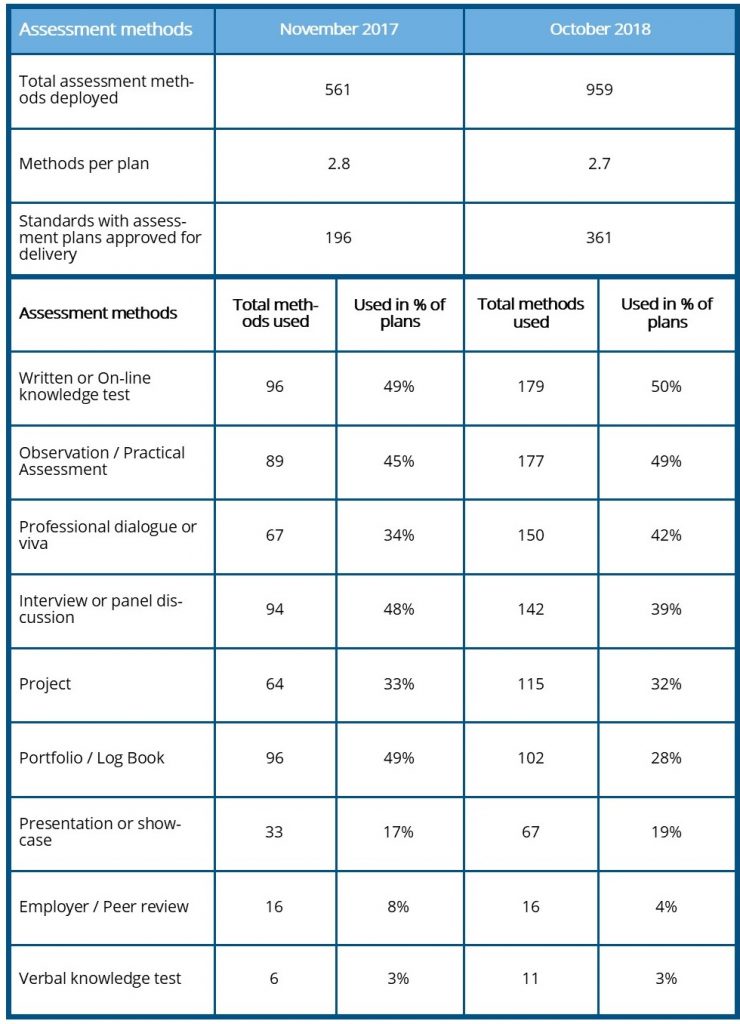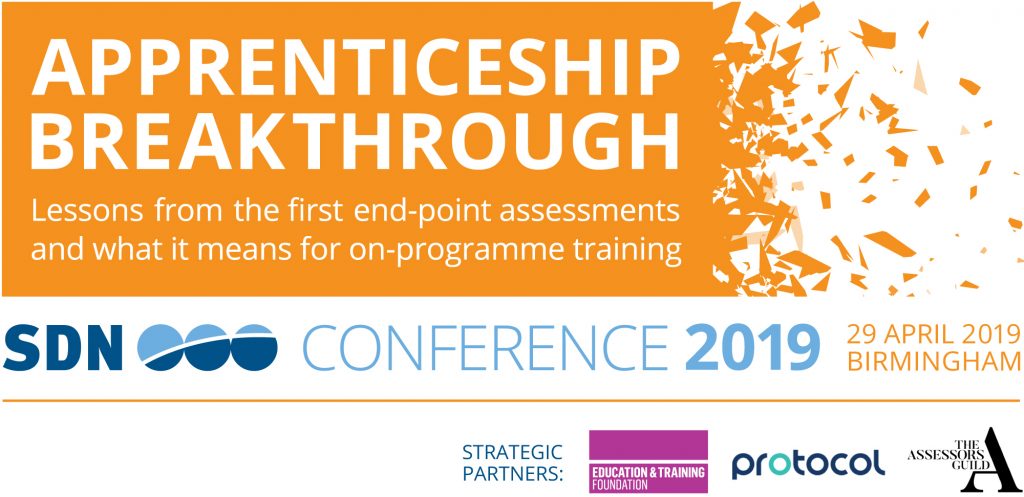
Every few months, SDN carries out a forensic analysis of apprenticeship standards to support our clients make more informed decisions about on-programme delivery or end-point assessment design.
We also delve into every assessment plan (yes that’s right, all 361 of them) and pick out the key features. This month, we thought we’d share it with you all.
So, if you currently delivering apprenticeship training, or are considering the delivery of end-point assessment, here’s a sector-wide picture of end-point assessment methods and the latest trends to inform your role.
The picture overall
End-point assessment is new for everyone. Most of those involved in trailblazer groups and end-point assessment delivery would agree that assessment plan design has improved as we’ve gone along.
So what, in general, is the approach now taken by trailblazer groups? Most assessment plans include an average of three assessment methods. These can be broken down into three broad categories:
- A knowledge test, to test the apprentice’s understanding (e.g. multiple choice or written / verbal knowledge tests)
- An observation-based assessment, to test the apprentice’s skills and behaviours (e.g. observation / practical assessment, or project)
- A dialogue-based assessment, allowing a more holistic assessment of the apprentice’s competence and delve into areas in more depth (e.g. professional dialogue, viva or interview)
Some interesting trends…
Why has the number of portfolio assessments dropped so dramatically?
In November 2017, 49% of all approved apprenticeship standards stated that a portfolio or log-book needed to be produced as a discrete part of the end-point assessment. Fast forward one year and that figure has dropped to just 28%.
So what’s going on? The Institute for Apprenticeships have now reaffirmed their position:
“…anything that is assessed at the end-point must have been completed after the apprentice has passed the gateway review. Therefore, neither a portfolio of work nor a showcase completed during the apprenticeship can be used as assessment methods by themselves…”
Although some assessment plans pre-date this guidance (and include portfolios as a gradable part of the end-point assessment), portfolios are now no longer seen as an assessment method in and of themselves.
If you look closely at assessment plans, you’ll see that many do still mention portfolios and log-books, but only in a way that supports the core assessment methods – providing evidence and discussion points for an interview or professional dialogue, for example.
(For more detail, read our more in-depth blog here: The Portfolio – under the bonnet of end-point assessment)
Professional dialogue on the rise…
One assessment method that is becoming increasingly popular is the Professional Dialogue (or Viva), largely driven by the increasing number of higher-level apprenticeships. In November 2017, this was the fifth most popular end-point assessment method – 12 months on, it is now in third place (in 42% of all assessment plans).
Professional discussions tend to be more holistic – it is a key opportunity for the apprentice to demonstrate their depth of understanding and articulate the development of their skills and behaviours in a way that is likely to attract a higher-level grade.
End-point assessment organisations will take slightly different approaches to the professional discussion (e.g. open / closed dialogue), so it’s important you understand their approach, and work with the apprentice on-programme to prepare them for it.
(For greater insight into the professional discussion, read our blog here: The Professional Discussion – under the bonnet of end point assessment)
Some assessment methods only feature in particular industries…
Employer / Peer Reviews, although used just sixteen times as an assessment method, is only used in standards in the digital industries (and two or three high-level engineering standards). This reflects that fact that particular methods are sometimes recognised and widely-used within particular industries.
With the Digital standards being some of the very first to be developed (and now up for review), it will be interesting to see what changes are made to these assessment methods, in a way that aligns with current trailblazer guidance.
Understand what end-point assessment means for your role as a trainer at our Apprenticeship Breakthrough Conference!
Early bird rates are now open for SDN’s Apprenticeship Breakthrough Conference (just £95+vat). It’s a great CPD opportunity for front-line training provider staff. The Conference is different. It’s not a policy talking shop, but solution focused – allowing you, and your staff to gain insight, tools and actions to improve your practice.
Don’t miss out – find out more and secure your place here: Apprenticeship Breakthrough Conference
In-depth support
SDN works with training and assessment providers across the country to launch, grow, adapt and improve their provision. Contact our team of specialists for support.
For regular insights – sign-up to our mailing list and join our LinkedIn End-Point Assessment group to share ideas and best practice with fellow apprenticeship practitioners.


